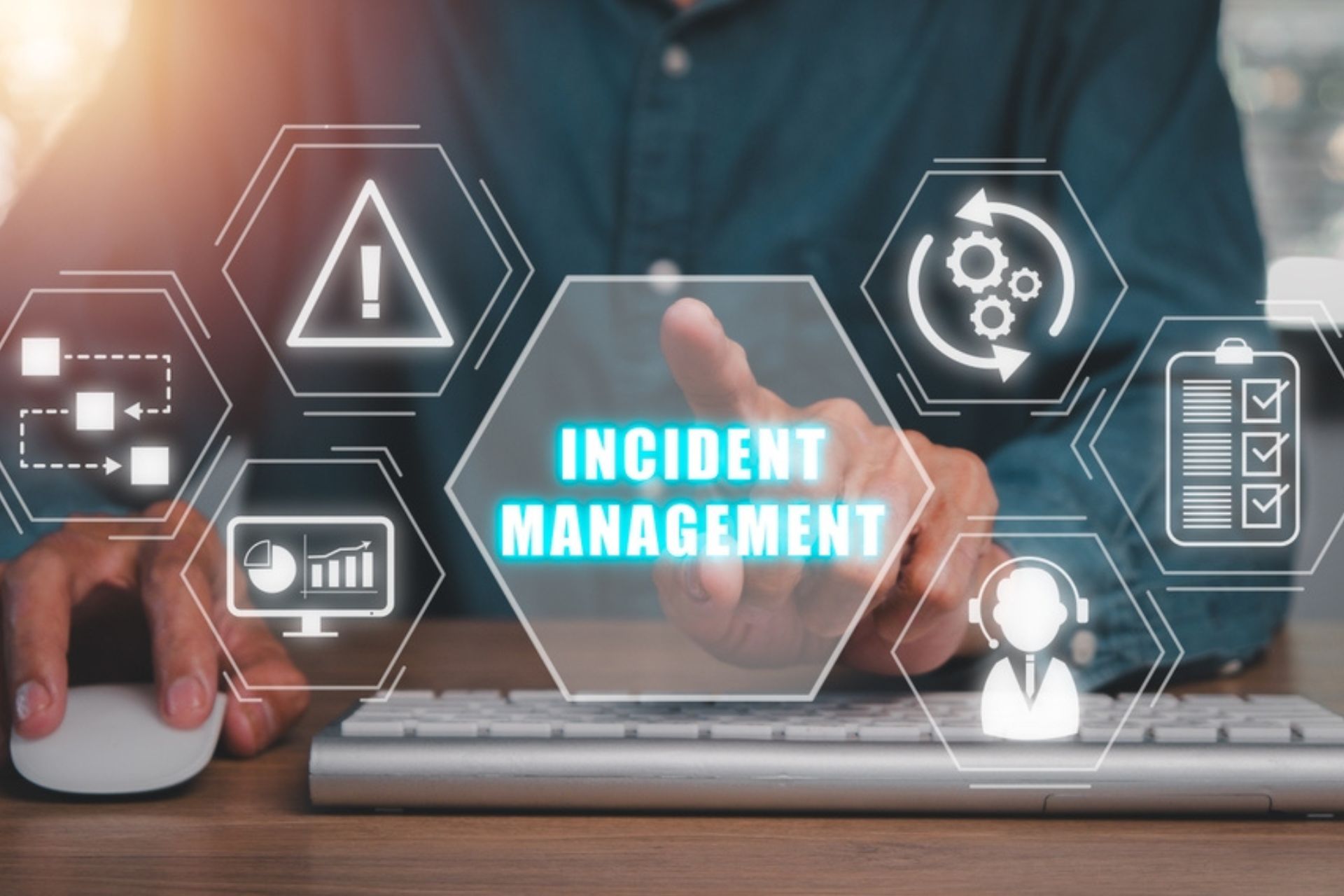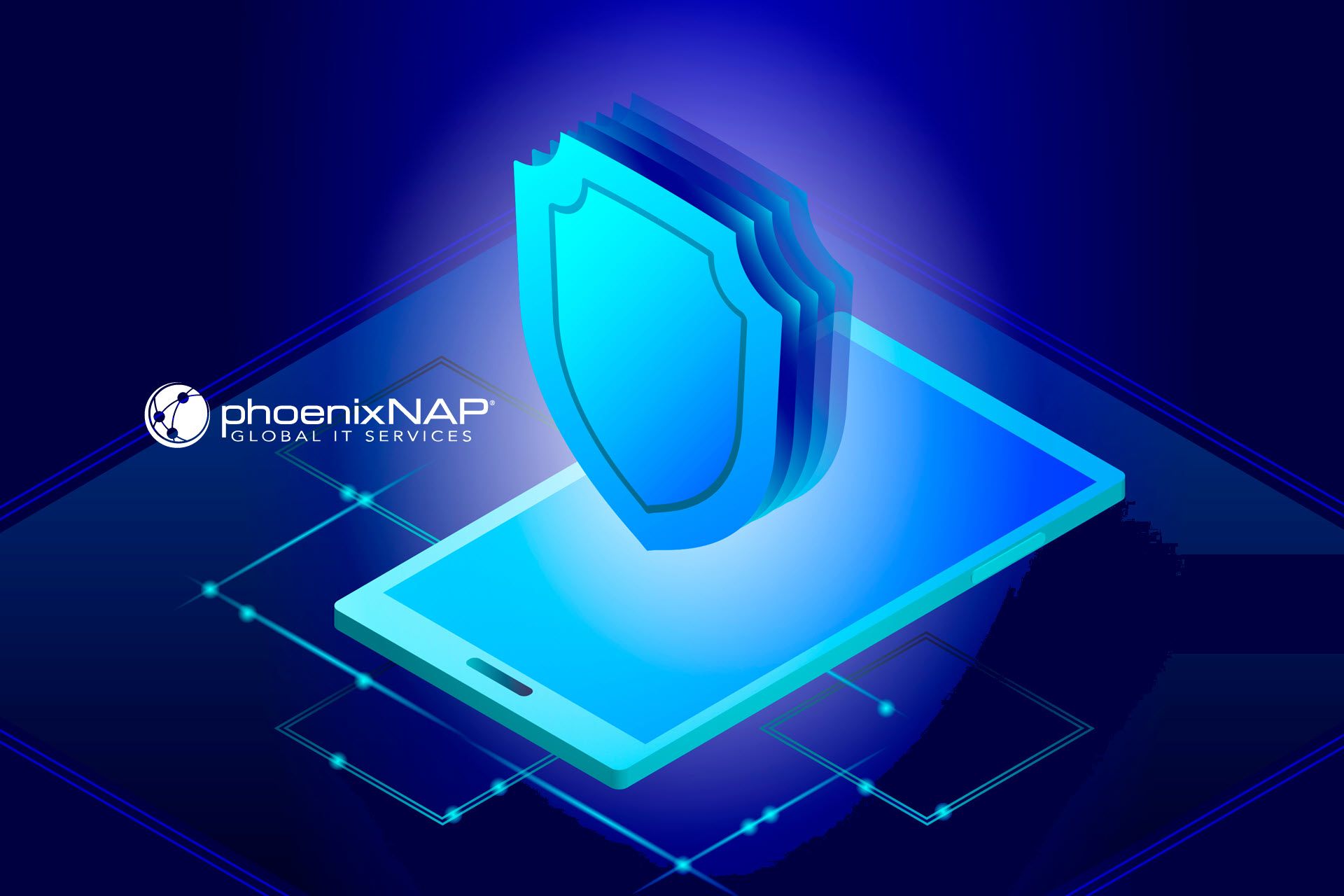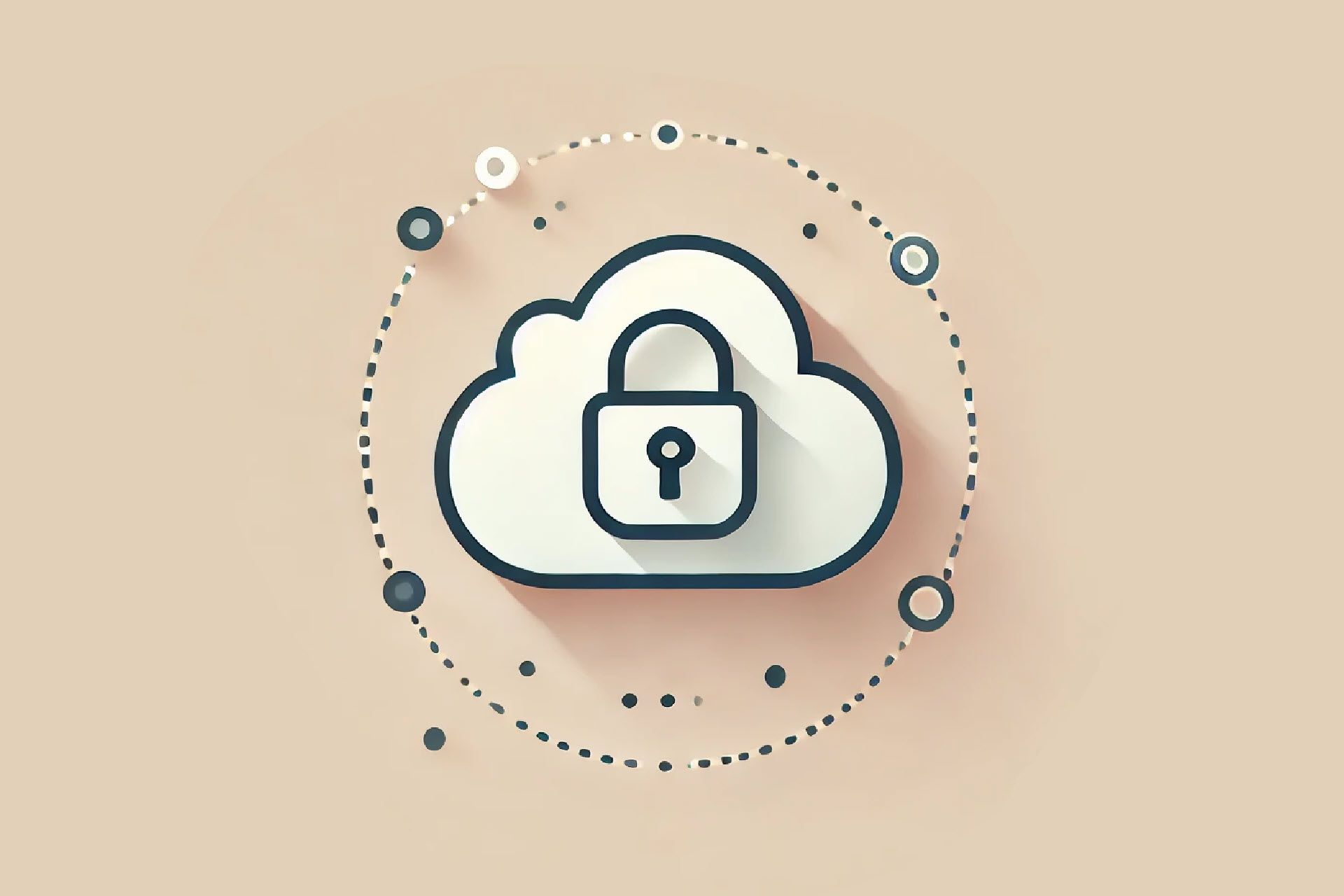For some organizations, cybersecurity ends up being a game of catch-up, where they wait for an incident to happen before reacting. However, being passive puts you at a significant disadvantage.
Hackers are stealthy. They don't announce their presence when they breach a network. Instead, they wait and bide their time. A ransomware hacker can sit in your network for months, encrypting backups, monitoring your system, and looking for vulnerabilities to exploit. By the time you realize you've been breached, it may be too late.
Information security risk management (ISRM) is all about actively identifying and addressing potential risks before they escalate into serious security incidents. Even though it may not be the most glamorous or exciting part of cybersecurity, ISRM is essential for any large enterprise.
This article will explain what information security risk management (IRSM) is and why it is essential for the prevention of security incidents.
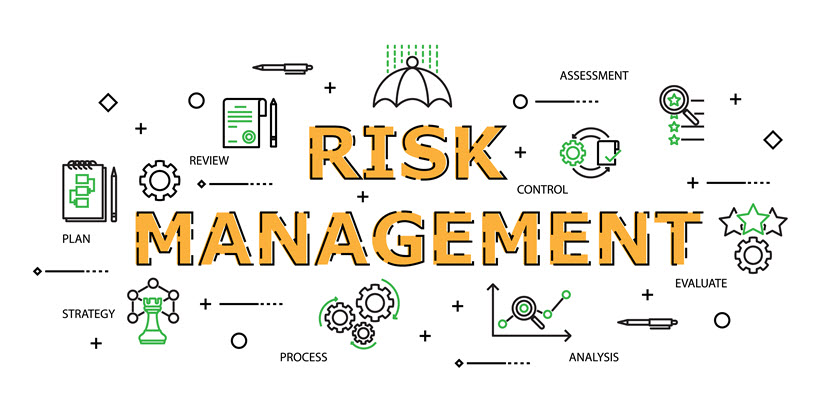
What Is Information Security Risk Management?
Cybersecurity risk refers to the likelihood of cyber threats adversely affecting an organization's sensitive data and operational procedures.
Here is a list of the most common security threats:
- Ransomware is malware that encrypts the victim's files and demands a ransom payment to decrypt them.
- Phishing is a social engineering attack where the attacker sends fraudulent emails or text messages to trick the victim into revealing sensitive information, such as passwords or credit card numbers.
- Insider threats are security breaches caused by insiders, such as employees or contractors.
- Advanced persistent threats are coordinated cyberattacks by an adversary who maintains unauthorized access to a network for a prolonged period to achieve a specific objective, such as data theft, espionage, or sabotage.
Information security risk management identifies and prioritizes potential threats, assesses their likelihood and impact, and devises strategies to mitigate them.
Why Is Information Security Risk Management Important?
Information security risk management is the bedrock of digital security, protecting organizations from the threats lurking in cyberspace. It not only safeguards an organization’s digital assets but also ensures regulatory compliance, fosters trust among stakeholders, and aids decision-making and resource allocation.
Organizations operating in highly regulated industries are frequently mandated to implement and maintain an ISRM program. For example, the healthcare industry has HIPAA, the Health Insurance Portability and Accountability Act, a U.S. federal law protecting the privacy of patients' health information. HIPAA requires healthcare providers to perform regular information security risk assessments to stay compliant and avoid fines and penalties.
Furthermore, large enterprises often have a high degree of separation of duties, meaning different teams and individuals are responsible for different aspects. This separation can make it challenging to align and manage cybersecurity risks effectively. ISRM provides a centralized view of risk, allowing you to coordinate all cybersecurity-related events efficiently.
Another benefit of formalized risk management is that it gives you the authority to justify added security controls and systems. For example, suppose an organization is considering implementing an advanced intrusion detection system. In that case, it can use a risk management framework to justify the expense by demonstrating the risk it will mitigate. The organization can also use the risk management framework to identify the most effective configuration and monitor the system's effectiveness over time.
What Is a Risk Management Framework?
ISRM frameworks provide guidelines and best practices to develop and implement a comprehensive program. They serve as a shortcut, allowing you to formulate a plan without doing everything from scratch. Additionally, some industries require organizations to adopt a standardized framework for external audits and certification.
ISO 27001 and the NIST Cybersecurity Framework are the most frequently used cybersecurity frameworks. NIST operates under the U.S. Department of Commerce, whereas ISO is an international standards organization. NIST's CSF cannot undergo certification or auditing, whereas ISO 27001 can. Furthermore, NIST provides its resources for free, while ISO 27001 comes with associated costs. Both are valuable tools, and the best framework for you will depend on your specific needs and requirements.
Backup and disaster recovery are essential to any ISRM program. Data breaches and power outages can permanently erase your data, damage your reputation, and cost you money - unless you have a backup and a disaster recovery plan.
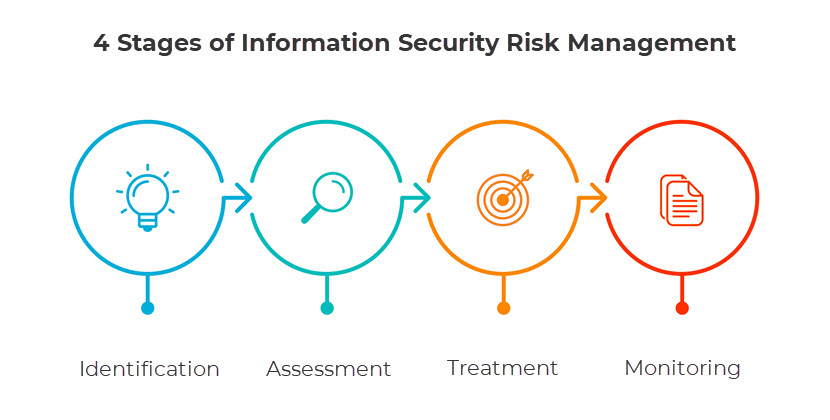
The Four Stages of ISRM
ISRM is a linear process. You must complete each stage to move on to the next. Here are the four stages of information security risk management:
1. Identification
The first step of ISRM is to identify all the organization's assets, vulnerabilities, threats, and controls.
- Assets: These include physical equipment like servers, laptops, and mobile devices and digital assets like data, software, and intellectual property.
- Threats: Threats are actors or events that could exploit vulnerabilities and harm assets. Threats can be internal (e.g., malicious insiders) or external (e.g., hackers, cybercriminals, natural disasters).
- Vulnerabilities: Vulnerabilities are weaknesses present in assets that threats could exploit. Vulnerabilities can be technical (software bugs, security configuration flaws) or procedural (no strong password policy, lack of training).
- Controls: These are the measures that organizations implement to mitigate risks. They can be preventive, like firewalls, or detective, like security monitoring and log reviews.
2. Assessment
Once you have identified all assets, vulnerabilities, threats, and controls, you can assess the risks. This process involves:
- Identifying the likelihood and impact of each risk: Likelihood is the probability of the risk occurring, while impact is the severity of the consequences if it does occur.
- Prioritizing risks: Not all risks are equal. Some are more likely to happen and have a greater impact. Prioritize risks so you can focus resources on mitigating the most critical.
Here is a common risk assessment equation:
Risk = Likelihood * Impact
To score a risk, you must first assign a numeric value to each factor. For example, you might assess the risk of a data breach as medium likelihood and high impact. Using a scale of 1 to 5, equates the likelihood to 3 and impact to 5, totaling 15.
Note that risk scoring is not a precise science. It is a way of comparing risks and prioritizing mitigation efforts. Your assigned values will depend on your risk appetite and tolerance.
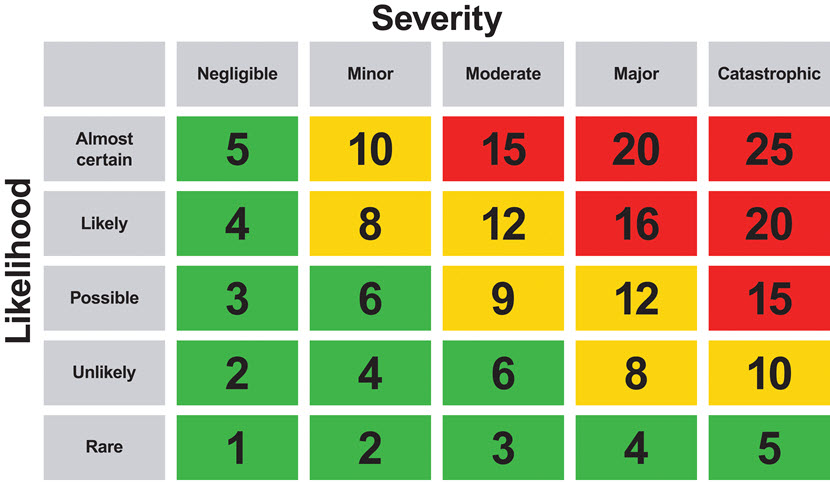
3. Treatment
Once you have assessed the risks, you can develop and implement risk treatment plans. The four main types of risk treatment are:
- Remediation: Remediation involves eliminating the underlying vulnerability that is creating the risk. For example, you might remediate a risk by patching a software vulnerability or implementing a new security control.
- Mitigation: Mitigation involves reducing the likelihood or impact of a risk. For example, you can mitigate risk by implementing a business continuity plan or educating employees on cybersecurity best practices.
- Transference: Transference involves transferring the risk to another party. For example, you can purchase cyber insurance to transfer the financial risk of a data breach.
- Acceptance: Acceptance involves making a conscious decision to accept the risk. This strategy may be appropriate for risks that are low in likelihood or impact, or for risks that are too costly or difficult to mitigate.
- Avoidance: Eliminating the risk by changing processes, technologies, or practices. For instance, discontinuing the use of a vulnerable software application.
4. Monitoring & Reporting
Information security risk management is a continuous process. You must monitor risks and update treatment plans regularly because new assets, vulnerabilities, threats, and controls are constantly emerging.
Another critical aspect of effective cybersecurity risk management is the reporting process. It includes creating detailed reports, presentations, or dashboards that convey complex information in a format understandable to non-technical stakeholders.
Risk management reporting ensures that those responsible for governance, oversight, and compliance are well-informed and can make decisions that align with the organization's security objectives.

Process Ownership in Information Security Risk Management
Information security risk management is a collaborative process that involves many participants. Without clear ownership, assets and risks tend to be neglected. People assume somebody else is responsible for a task, leading to inaction. On the other hand, clearly assigning responsibility ensures the protection of vital assets.
Within an ISRM framework, the following stakeholders play different parts. While their roles are connected, ISRM benefits from their responsibilities being clearly delineated and understood:
Process Owners
A business process is a series of interconnected activities and tasks that an organization takes to achieve a specific goal or outcome.
Process owners play a critical role in ISRM because they have the deepest understanding of the risks they face. They are also in the best position to implement and maintain security controls and to monitor their effectiveness.
Example
A software development team lead is a process owner. Their focus is on the overall success of their team and the organization's software development process. However, they work closely with asset owners to assess risks to the team's code and develop and implement risk mitigation strategies.
For example, they can implement security measures such as code reviews to reduce the risk of vulnerabilities in the code the team produces.
Asset Owners
Asset owners are responsible for managing and protecting an organization's assets, which include information, infrastructure, and other valuable resources. While teams can assume the role of an asset owner, it's generally more effective to designate an individual for this responsibility.
Example
An asset owner, such as a high-ranking system administrator, is responsible for the overall performance of the organization's IT infrastructure.
Their duties include identifying, evaluating, and mitigating risks to servers and networks, whether autonomously or under the supervision of the risk owner. For example, they could implement or expand role-based access controls to diminish the risk of unauthorized data access.
Risk Owners
Risk owners are responsible for effectively implementing risk management activities, including identifying and assessing potential risks, developing risk mitigation plans, and monitoring the progress of risk treatment plans.
For each identified risk, multiple personnel may be involved in its management, including subject matter experts, project managers, and other members of the organization's risk management team. These individuals work closely with the risk owner to implement mitigation measures and monitor the progress of treatment plans.
Example
The head of the IT department epitomizes the role of a risk owner. Given their leadership position, they possess the authority to oversee the organization's risk management landscape and the capacity to delegate responsibilities.
Their role in risk management is to oversee the development and implementation of the IT security policy. Additionally, they allocate resources to initiatives, monitor the effectiveness of the information security program, and report on the organization's security posture to senior management and the board of directors.
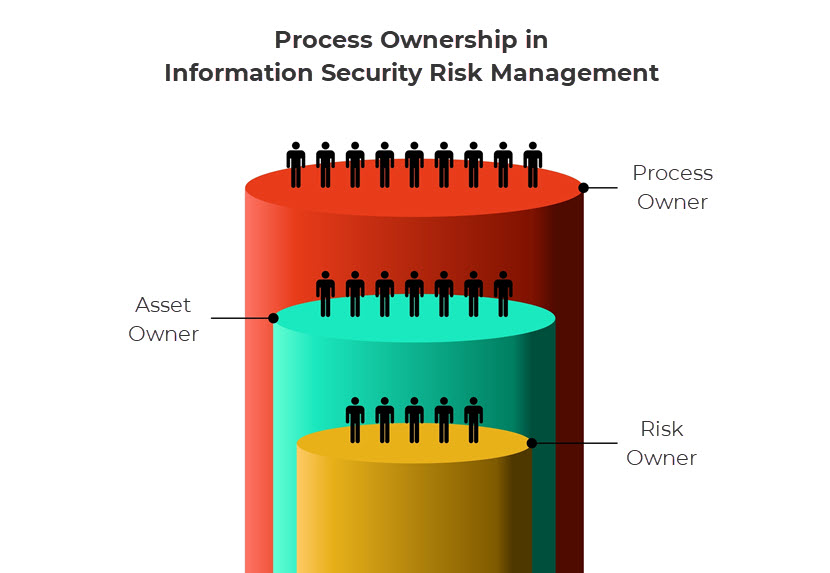
Information security is a collective responsibility. Security awareness training will equip your organization with the skills to confidently identify and neutralize online threats.
Key Takeaways on Risk Management
Information Security Risk Management (ISRM) is vital for strong cybersecurity, helping organizations comply with regulations, strengthen governance, and allocate security resources effectively. A solid ISRM plan enhances resilience against cyberattacks, safeguards IT systems, and protects customers and employees, even though it is often challenging to implement and maintain.
